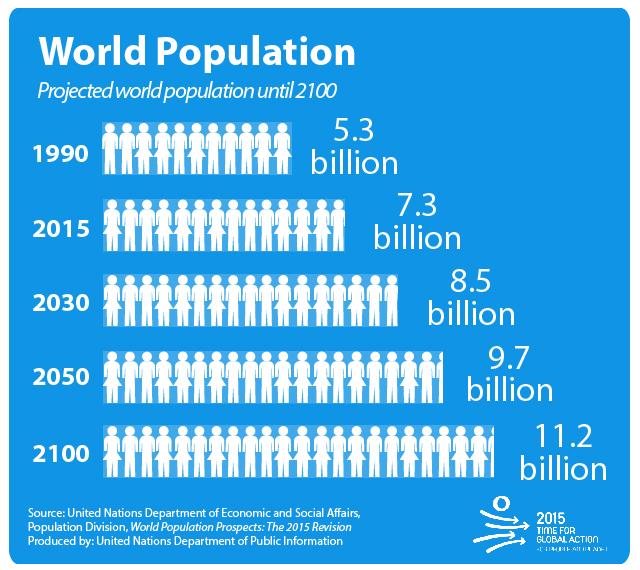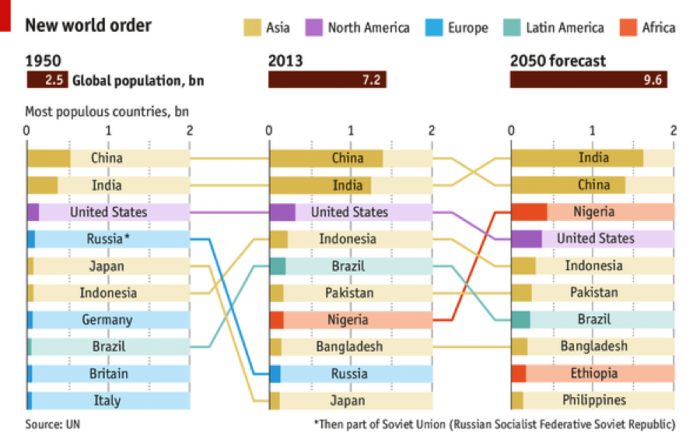

The Special Assistant on Sustainable Banking, CBN, Dr. Recall that the Central Bank of Nigeria in June 2015, brought to the front burner the issue of youth unemployment in the country, stating that 80 per cent of Nigerian youths are without jobs.

Given this startling statistics about Nigeria’s population explosion by 2050, the pertinent question which arises is, is the Nigerian government ready for the challenges ahead, particularly the nation’s worrisome unemployment figure. It also puts the East African country’s Population per Square Kilometre of Arable land at 641 and Percent of Married Women between ages 15 and 49 using All Methods, as well as Modern Methods of Contraception during copulation with their spouses at 42 and 40 respectively. The report puts Ethiopia’s Births per 1, 000 population at 31 Deaths per 1, 000 population at 8 Net Migration Rate per 1, 000 population at 0 Infant Mortality Rate at 49 Total Fertility Rate at 4.1 Percent of Population who are less than age 15 as well as those that are age 65 and above at 41 and 4 respectively GNI in Dollars as at 2014 at 1, 500 and the Percentage of population living in Urban areas at 17. It also puts the Middle African country’s Population per Square Kilometre of Arable land at 1, 044 and Percent of Married Women between ages 15 and 49 using All Methods, as well as Modern Methods of Contraception during copulation with their spouses at 20 and 8 respectively. The report puts Congo Democratic Republic’s Births per 1, 000 population at 46 Deaths per 1, 000 population at 16 Net Migration Rate per 1, 000 population at -0 Infant Mortality Rate at 108 Total Fertility Rate at 6.6 Percent of Population who are less than age 15 as well as those that are age 65 and above at 46 and 3 respectively GNI in Dollars as at 2014 at 700 and the Percentage of population living in Urban areas at 42. Methods, as well as Modern Methods of Contraception during copulation with their spouses at 15 and 10 respectively. It also puts Nigeria’s Population per Square Kilometre of Arable land at 520 and Percent of Married Women between ages 15 and 49 using All The report puts Nigeria’s Births per 1, 000 population at 39 Deaths per 1, 000 population at 14 Net Migration Rate per 1, 000 population at -0 Infant Mortality Rate at 69 Total Fertility Rate at 5.5 Percent of Population who are less than age 15 as well as those that are age 65 and above at 43 and 3 respectively GNI in Dollars as at 2014 at 5, 680 and the Percentage of population living in Urban areas at 50. Other variables used are Population per Square Kilometre of Arable land and Percent of Married Women between ages 15 and 49 using All Methods, as well as Modern Methods of Contraception during copulation their spouses. Variables which the report used however to arrive at its forecast are Births per 1, 000 population Deaths per 1, 000 population Net Migration Rate per 1, 000 population Infant Mortality Rate Total Fertility Rate Percent of Population who are less than age 15 as well as those that are age 65 and above the Gross National Income (GNI) in Dollars as at 2014 (that is the the dollar value of a country’s final income in a year, divided by its population a reflection of the average income of a country’s citizens) and the Percentage of population living in Urban areas. How Nigeria, Congo DR, Ethiopa will leapfrog Japan is projected to see the biggest decline with 30 million fewer people living in the country.

Populations in 34 countries are projected to be smaller in 2050 than it now. While African countries will boom in terms of population, the situation in some of the world’s most developed countries won’t be that rosy, mainly due to falling birth rates and aging. South Sudan, where the average is 6.9 children per woman, comes second, followed by the Democratic Republic of Congo and Somalia tied for third with 6.6 babies per woman. Niger, with 7.6 children per woman, is leading the table. The bureau’s report shows that the 10 countries with the highest fertility rates are currently in Africa. The rise of African countries is not surprising. The United States projected to have 398 million inhabitants by 2050, will just about maintain its position as the third most populous country. The bureau’s annual Population Data Sheet sees the global population ballooning by 2.5 billion to 9.8 billion by 2050. Will slip to No 3 with an estimated 1.4 billion people. By 2050, India will remain the most most populous country in the world with an estimated 1.7 billion people, while China According to the report, China, with an estimated 1.3 billion people now, will be leapfrogged by India as the most populous country in the world by 2022.


 0 kommentar(er)
0 kommentar(er)
